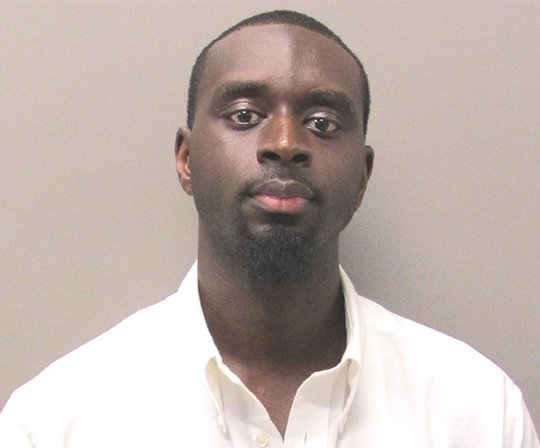An eight-woman, four-man Garland County Circuit Court jury deliberated for about four hours Friday before finding a Hot Springs man guilty of first-degree murder for a 2014 triple shooting that claimed the life of a local woman.
Steven Leroy Swanigan, 33, was also found guilty of two counts of first-degree battery for the April 30, 2014, shooting at Springwood Townhomes, 200 Springwood Road. Mayela Mata, 26, was shot in the head and later died, while her 20-month-old daughter was shot in the side and a family friend, Antouin Bond, was shot in the back.
An alleged accomplice, Benjamin Mickey Pitts, 28, also of Hot Springs, is scheduled to stand trial on the same charges Oct. 23, but prosecutors had indicated in the trial they believed Swanigan was the shooter.
In his closing statement to the jury, Chief Deputy Prosecutor Joe Graham said it didn't matter if the shooter intended to kill Mata when he burst into the apartment, firing at least six shots from two handguns, because "it was clear he intended to kill someone."
Noting the different trajectories involved in hitting all three victims, Graham said, "He's changing his aim as he goes, he's aiming at people, firing in the direction of the people in the room. You come in shooting two firearms the way he did you know someone is going to die."
Graham also stressed that whether Swanigan was the actual shooter or just an accomplice "he is still responsible" under the law.
Graham spent much of his closing reviewing the state's timeline of events, including the purchase of ammunition, a human practice target and a cellphone by Swanigan four days before the shooting, and that he borrowed a white Cadillac with a blue top, like the one used by the suspects, the day of the shooting.
He noted investigators examined the cellphone Swanigan had purchased and discovered he had accessed an aerial photo of the Springwood apartments prior to the shooting and made an online search for a police scanner 30 minutes after the shooting. He later searched online for stories about the homicide and for hotels in Conway.
Authorities located Swanigan at a hotel in Conway, but he fled before he could be taken into custody. "He got out of town quick and hit the door running when the police came," Graham said, noting these were signs of his guilt.
Graham dismissed earlier attempts by Swanigan's attorney, Bobby Digby, to put Mata's boyfriend, Terrance Scott, on trial because of evidence of drugs and money found at the apartment. "That's for another jury on another day," he said, noting that regardless of Scott's alleged dealings "he didn't deserve to be shot at."
He said, "Nobody deserves that. Antouin Bond and this 20-month-old baby didn't deserve to be shot or for her to be forced to live her life without her mother and Mayela Mata didn't deserve to die."
Graham also disputed defense claims Swanigan had no motive for the attack, noting the state only has to prove the elements of the crime and doesn't have to prove a motive.
In his closing, Digby acknowledged prosecutors didn't have to prove a motive, but argued there were many other potential suspects who did have a motive. "There was a motive for this, but even (Scott) had said he never had any problems with (Swanigan)."
He said none of the witnesses there when the shooting occurred could identify Swanigan as the shooter, despite the fact Scott had been friends with him for years. "The three people with the biggest dog in this fight couldn't identify him. If they don't know it was him, then we don't know it was him."
Digby said the victim's apartment was "a drug house," noting investigators found $7,000 in cash hidden around along with drugs, scales and other paraphernalia. "That's got to have something to do with why this went down," he said.
He noted there was no physical evidence found proving Swanigan was in the Cadillac, dismissing previous testimony about a footprint on the floorboard matching the imprint of a Polo brand boot Swanigan was seen wearing previously.
He argued that brand of boot was "very popular with people in their 20s" and they didn't find any shoes they could compare "wear patterns" and "other unique identifications" to, noting, "They only have an impression in some carpet they compared to an online photo."
He said all the prosecution's evidence was circumstantial and "every piece of evidence they have, if you add it to the other evidence, just doesn't add up."
Graham countered no one was able to positively identify the shooter because his face and head were covered except for his eyes. He reminded jurors of previous testimony Scott had actually called Swanigan after the shooting to ask him if he was the one who had attacked them.
"He wouldn't have had any reason to ask unless he thought there was a possibility it was him," he said, noting Swanigan fit the physical description of the shooter even if they didn't see his face.
"I think the evidence in this case is clear," Graham said.
Local on 10/14/2017